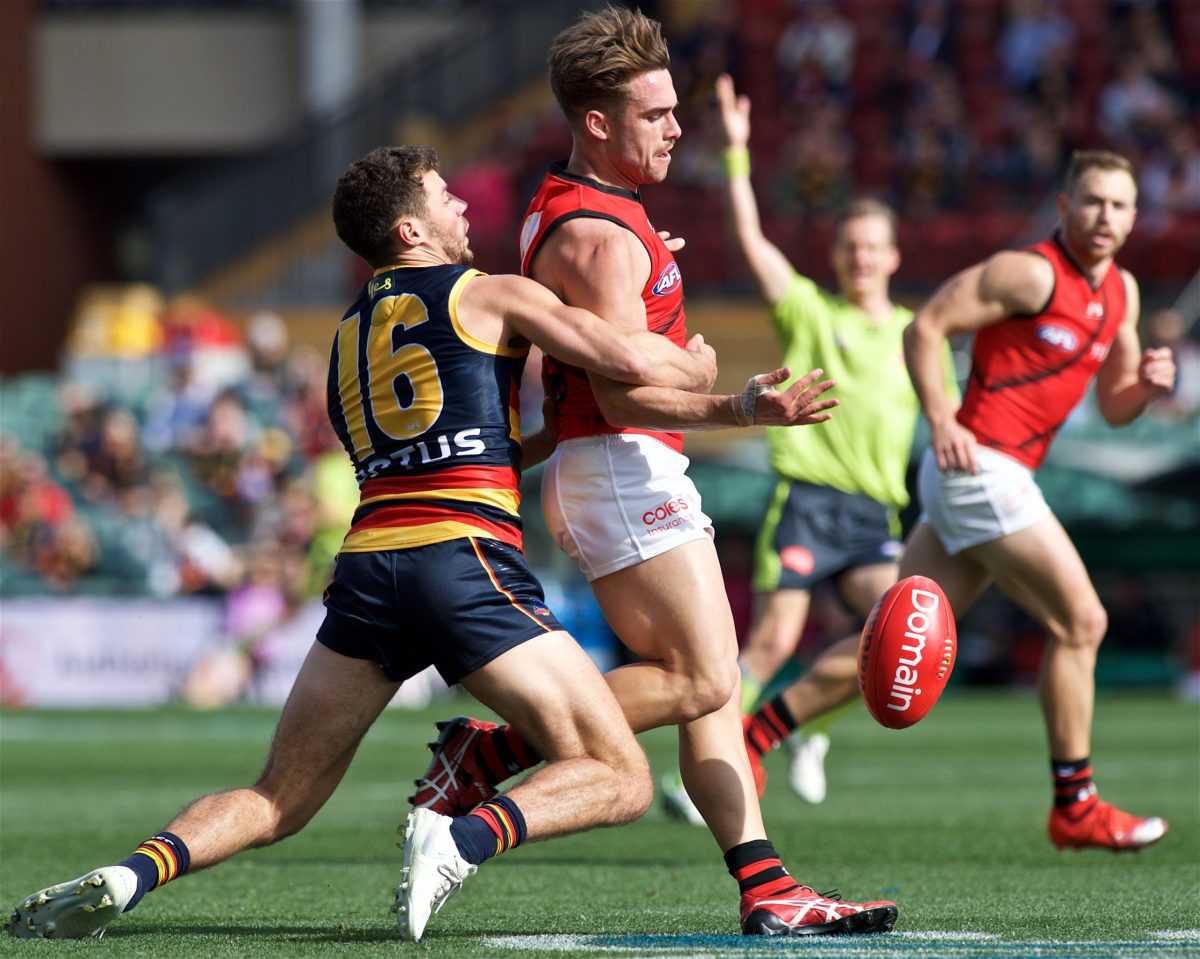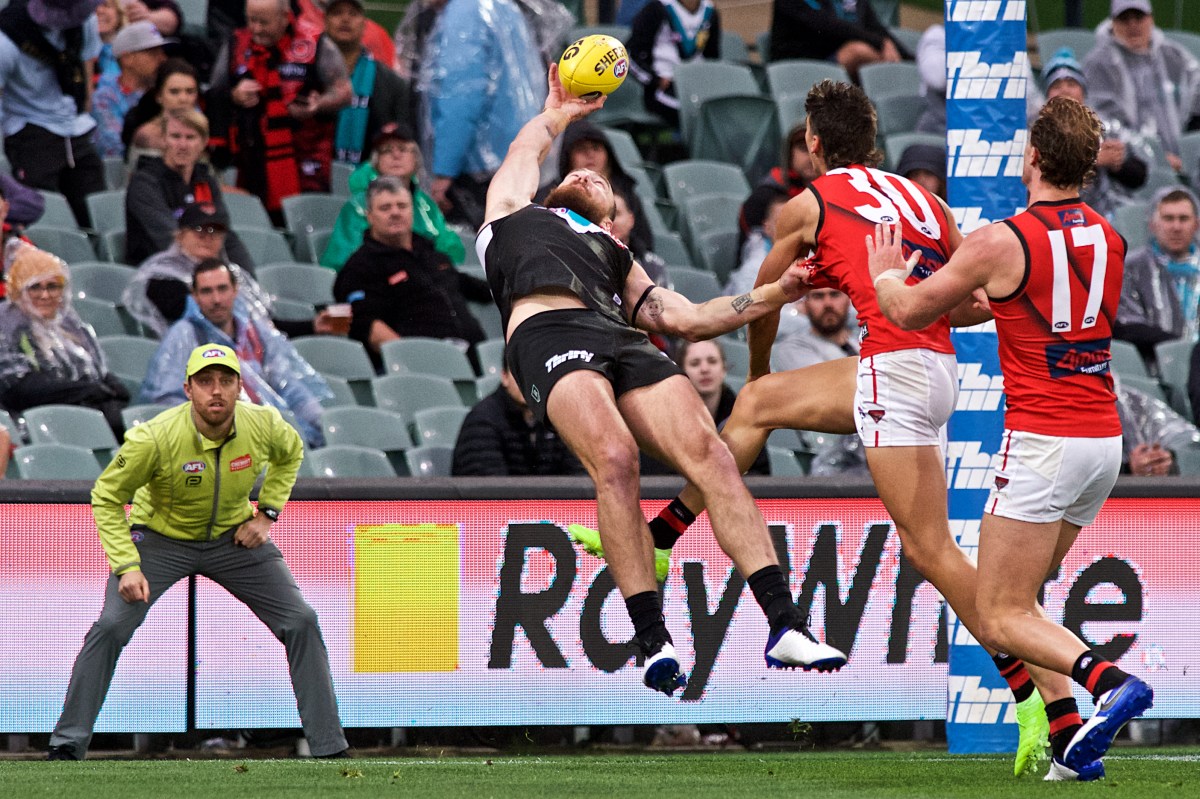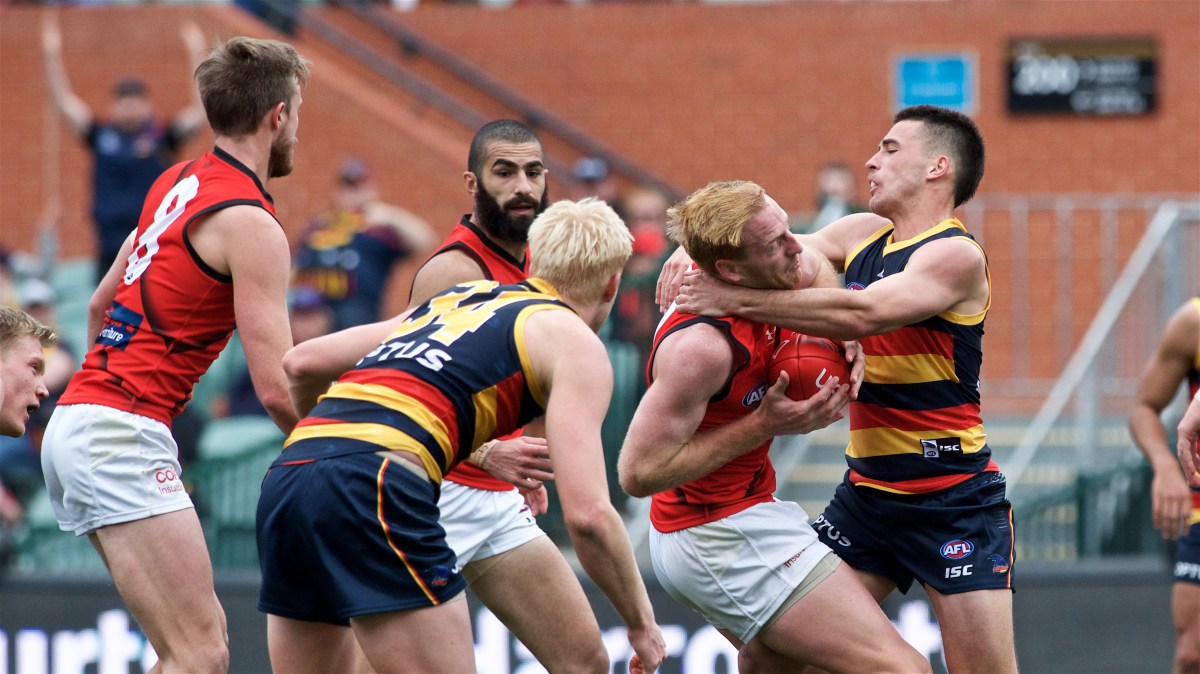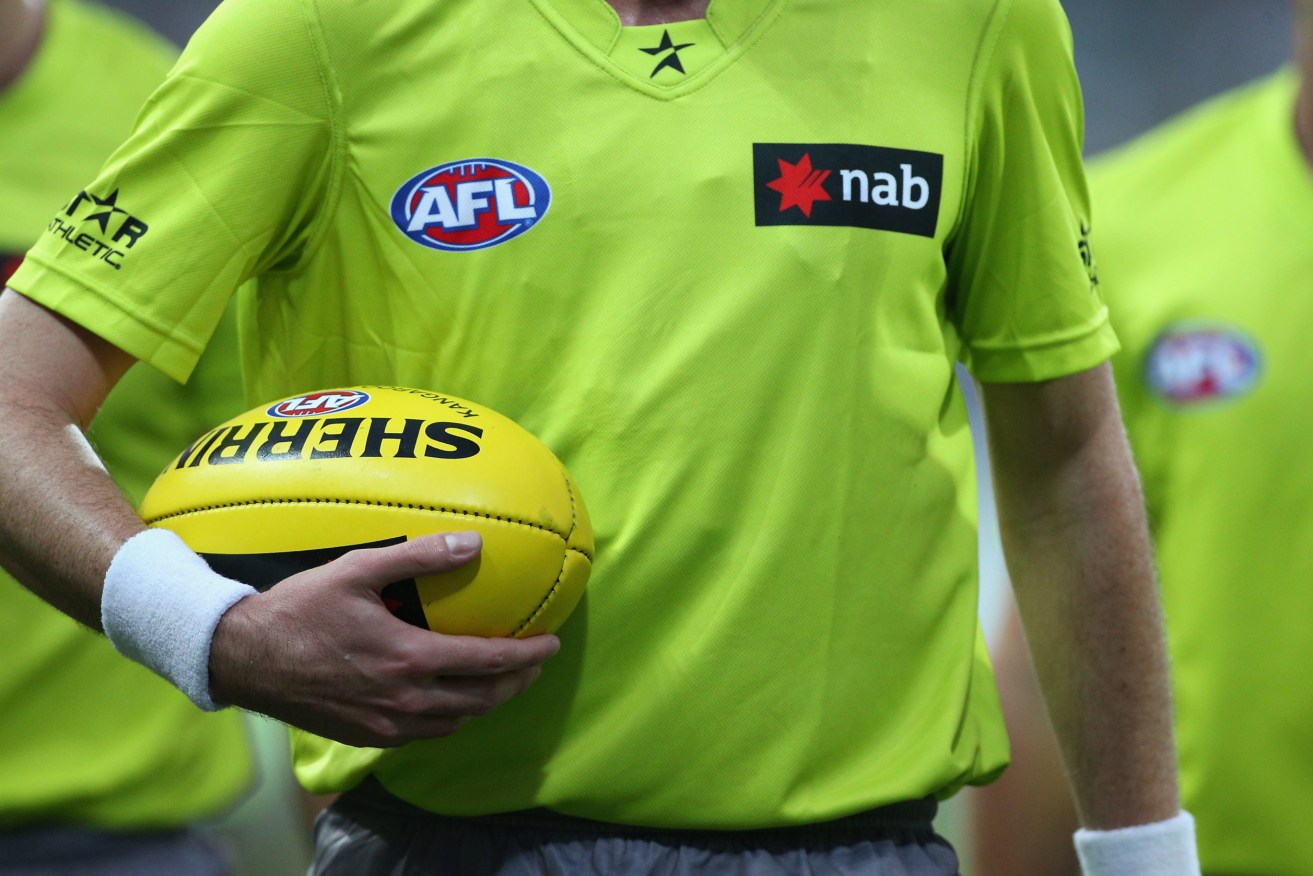The AFL’s so-called “19th team” – the umpires – has lost its much-admired and long-serving umpiring coach Hayden Kennedy without explanation.
The former field umpire of 495 games (including five grand finals) quit the AFL a month ago after eight years.
Kennedy had no job offer luring him away. And he offered no reason for his surprise exit. There has been silence, while his former troops endure the criticisms from fans, coaches and commentators frustrated by subjective rules such as holding-the-ball.
Those close to Kennedy say he was simply fed up. Tired of being overruled in his province, as he was with the umpiring appointments for last year’s Richmond-Geelong grand final at the Gabba, where Craig Fleer became the first South Australian to officiate Australian football’s biggest match of the season.
Frustrated by the “ARC”, the centralised video review centre that is supposed to be a point of correction for umpiring decisions but is seen by the ranks as a point of condemnation. Mistakes work against getting major appointments such as finals, and video – as soccer referees know – is not always right.
Kennedy also was the man in the middle last season when there was unease between umpires and AFL head of umpiring Grant Williams, who was replaced by another executive, Dan Richardson, with no league umpiring experience.
Such a script involving an AFL league coach would create heated debate for the football television panel shows such as Footy Classified or AFL360, but not so with Kennedy’s surprise exit.
Almost two decades have passed since inaugural Crows chief executive Bill Sanders was commissioned by AFL boss Wayne Jackson to write the “national review of umpiring”.
InDaily this week followed Sanders’ footsteps by looking at the state of umpiring at AFL, SANFL and community football level with the Adelaide Footy League. In stark contrast to 2003 when Sanders wrote his review, the greater challenge for umpiring appears at the elite level – as highlighted by Kennedy’s surprise resignation – rather than at the grassroots.

Photo: Michael Errey/InDaily
Murray Ducker is a South Australian Football Hall of Fame member, remembered more for his umpiring in 198 SANFL games – including six grand finals, in particular the 1973 Glenelg-North Adelaide epic – than, in his words, as a “very ordinary half-back flanker” for 11 games at North Adelaide in the early 1960s.
Ducker’s football playing career ended by concussion from a collision with West Adelaide hero Bertie Johnson, a moment that forced him to miss a pharmacy exam and then face the choice of being a league footballer or a chemist.
His return to football came from an uncle, former umpire Rob Ball, handing down an Acme Thunderer whistle and the challenge to control an SANFL league game.
Today, Ducker – even with the greater financial incentives on offer to AFL umpires – would avoid the big league.
“No, no way,” Ducker told InDaily. “And I am concerned for those who do take it up in the AFL.
“I don’t blame the lads (for today’s contentious umpiring moments in AFL matches). They umpire from too far away – by instruction. The umpires are told to keep the game flowing, make sure the ball stays in motion.
“So they miss the first obvious free kicks. So many obvious ones too, like players being pushed in the back and the throws. Oh, the throws … they are chucking it now.”
Ducker remembers he worked to a “little law book”.
“Now the umpires have a tome,” he said.
And the most contentious rule is on page 52, the holding-the-ball law that has tormented Australian football since its start in 1858.
“I’ve become confused,” Ducker said. “In my day, if you were caught with the ball and could not dispose of it properly, it was holding the ball. Now, there is this very confusing question of ‘prior opportunity’.”
Law 17.6.1 says the “spirit and intention” of the holding-the-ball rule is to ensure “the player who has possession of the football will be provided an opportunity to dispose of the football before rewarding an opponent for a legal tackle”.
Then there are four clauses and four sub-clauses that load up the rule with subjective themes such as “prior opportunity” and “correct disposal”.
AFL coaches last month urged the league to rewrite the rule. Some, in particular Richmond premiership mentor Damien Hardwick, advocate an end to “prior opportunity” while others such as Sydney premiership master Paul Roos warn this would lead to 100 free kicks in every match.
Western Bulldogs premiership coach Luke Beveridge says the AFL is “flinching on the run” with the interpretation of holding-the-ball calls and “needs to keep it simple” for umpires.
AFL field umpire “Razor” Ray Chamberlain admits holding-the-ball is “one of the most-challenging laws in the game”.
“But who do you want to rewrite the law for?” asks Chamberlain. “We (the umpires) know the rule. I know 34 people (his fellow AFL umpires) who can eloquently articulate the law.
“Every AFL umpire can tell you what is the holding-the-ball rule with aplomb. I am not sure anyone else in the industry could.”
But can the umpires apply the rule?
“Umpires are human … we will make mistakes,” says Chamberlain adding there is enough “grey in a subjective law” to create errors in interpretation.

Photo: Michael Errey/InDaily
Colin Rowston crossed the SANFL-AFL divide to officiate in 33 national league matches from 2002-2004 while taking charge in 310 State league matches including three SANFL grand finals.
After retiring in 2011, finishing in the league grand final, Rowston picked up his whistle again “for fun” in 2015 in the Adelaide Footy League where he now serves as the umpiring manager.
Last weekend, that fun became tiresome for Rowston and Scott Hosking, another former SANFL league umpire lured back to the grassroots games.
From the sidelines, coaches were repeatedly critiquing their decisions.
“You stop the game,” says Rowston. “You warn the coaches that the next outburst will be met with a free kick against their team. And you suggest that it is better for the coaches to direct their energy towards instructing their players rather than constantly questioning umpires.
“We might just crack down on that one this week. When Scott (Hosking) is questioning if it is worth giving up time with his kids to cop that abuse.”
Adelaide Footy League chief executive John Kernahan takes issue and shows no tolerance with coaches who are umpiring experts on the sidelines, but decline invitations to attend umpiring seminars.
“Coaches who ignored an invitation at the start of the season to participate in an umpire education forum and yet are keen to argue to the league about umpiring on a Monday are wanting their cake and eating it too,” Kernahan told InDaily.
“By the composition of our competitions, we have 15 or so A-grade coaches – plus their B- and C-grade guys – with any given Saturday off with the byes. The invitation was put to those guys to pair up with me to umpire a match; to put their money where their mouths are.
“Since that invitation was issued, the Monday morning critiques have dropped off and, at this point, not one coach has taken me up on my offer.”
Like Chamberlain, Rowston says: “Umpires are going to make mistakes, but we also aim to be better.”
Rowston notes the weekend umpires in community football are subject to the “Friday night football syndrome”.
“The coaches and fans see how a rule is interpreted in the AFL on Friday night and then expect the same in their game on Saturday or Sunday,” Rowston said.
“But each league has its own rules – it is a dog’s breakfast.”
Rowston is a graduate of Shane Harris’ academy of SANFL umpires. He carried the whistle during the era when SANFL umpires were considered more understanding of the spirit of the holding-the-ball rule than their AFL counterparts.
Rowston pays tribute to Harris’ work as SANFL umpires coach since moving from Melbourne 25 years ago.
“Shane made it simple. He would say, only pay the real obvious holding-the-balls and protect the ball player,” Rowston said. “It was definitely harder to be called holding-the-ball in the SANFL than the AFL.”
The problem became coaches drawing more and more players around the contest and, in this congestion, there were repeat stoppages while umpires called for ruck duels rather than awarding free kicks to clear the area.

Photo: Michael Errey/InDaily
Shane Harris has never known it to be easier to recruit umpires during his 25 years at SANFL headquarters.
The “blessing”, as Harris calls it, came five years ago when the SANFL noted there was a “goldmine” database for teenage footballers on the internet.
“We could immediately appeal to 14-to-18-year-olds to play football one day and umpire the next,” said Harris, an AFL field umpire across 73 matches from 1987-1992.
“We got lucky. Those kids got a taste of umpiring. They made some money along the way and by word of mouth we had more and more teenagers wanting to umpire.”
The SANFL today has 560 registered umpires, ably coping with the growth in the women’s game. Retention is at strong levels, easing a concern underlined in the Sanders report in 2003.
“Away from the AFL,” says Harris, “it is still pretty simple.”
“The umpires are not carrying microphones as they are in the AFL. They can talk to the players and the players can talk to them as well without everything being monitored or misunderstood. That relationship between umpires and players is very powerful for everyone understanding and appreciating each other.
“It is a whole lot different away from the AFL.”
There will be concerns from last month’s incident at an SANFL Juniors girls match at Edwardstown Memorial Oval where a 14-year-old boundary umpire was assaulted. Both the SANFL and SA Police have investigated the melee with police charging a 44-year-old man with two counts of assault and the league banning two girls from the match for one game.
“You immediately get parents asking if it is safe for their children to be umpires,” Rowston said. “Safety from abuse remains the biggest issue in recruiting and retaining umpires, but it is a lot better these days.”
Harris adds: “I am not sure (the abuse) has reduced. But people are more mindful of their comments. That is a society change.”
This change still is not deep enough to avert the umpiring crisis Bill Sanders noted in regional districts where resources are thin within country leagues, more so with the cutbacks forced by the COVID pandemic.
South Australia’s six-club Riverland Football League and the associated eight-team second-tier competition cannot find enough umpires to control its three A-grade matches each weekend. This is because poor crowd behaviour and abuse towards umpires from the fans on the boundary lines has made it less appealing to carry the whistle.
The Riverland Football League now has a volunteer escort umpires between the changerooms and the playing field with stronger monitoring of crowds.
Harris shares Rowston’s frustration with the differing rule books from league to league. In Harris’ case, he works an SANFL rule book with the well-defined “last disposal” law for kicks and handballs that cross the boundary line. The AFL has a differing interpretation that demands an umpire determine if a player showed “insufficient” care to keep the ball in play.
“I do feel sorry for the fans,” Harris said. “They will see a free kick paid on Friday night in the AFL that won’t be paid in the SANFL the next day.
“I understand their frustration. Ideally, we would have the same rules from AFL to the grassroots with modifications only at junior level for safety reasons.
“Holding-the-ball? I think we got it right at SANFL level,” added Harris who insists “the player with the ball should be given the chance to get it out of a tackle … so delay the whistle.”
Back at the AFL, Chamberlain says there is too much emotion in critiquing umpires.
“It is important we remove the emotions and stick to the facts,” he said.
Strangely, there are very few to work through on Hayden Kennedy’s sudden resignation from the AFL’s 19th team.





